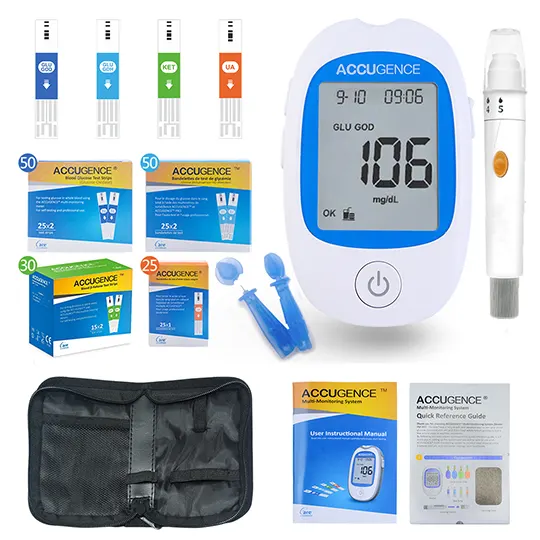Dosing and uses of D50W, DGlucose (dextrose)
Adult dosage forms and strengths
intravenous solution
- 2.5%
- 5%
- 10%
- 20%
- 30%
- 50%
- 70%
oral liquid
- 55%
Hypoglycemia
IV: 10-25 g (ie, 20-50 mL 50% solution or 40-100 mL of 25%)
PO: 4-20 g as a single dose; may repeat after 15 min if self-montoring of blood glucose shows continued hypoglycemia
Pediatric dosage forms and strengths
intravenous solution
- 2.5%
- 5%
- 10%
- 20%
- 30%
- 50%
- 70%
oral liquid
- 55%
Hypoglycemia
Dilute before IV administration, may give more concentrated solution peripherally in emergency (ie, 12.5-25%)
< 6 months
- 0.25-0.5 g/kg/dose (1-2 mL/kg/dose of 25% solution) IV; not to exceed 25 g/dose
Infants > 6 months and Children
- 0.5-1 g/kg up to 25 g (2-4 mL/kg/dose of 25% solution) IV; not to exceed 25 g/dose
Adolescents
- IV: 10-25 g (ie, 20-50 mL 50% solution or 40-100 mL of 25%)
- PO: 4-20 g as a single dose; may repeat after 15 min if self-montoring of blood glucose shows continued hypoglycemia
D50W, DGlucose (dextrose) adverse (side) effects
Frequency not defined
Hyperosmolarity
Edema
Venous thrombosis
Tachypnea
Fever
Hypermolar syndrome
Hypervolemia
Phlebitis
Diarrhea
Polydipsia
Pulmonary edema
Cerebral hemorrhage
Mental confusion, unconsciousness
Cerebral ischemia
Hypophosphatemia
Hypomagnesemia
Hyperglycemia
Injection site extravasation
Tissue necrosis
Warnings
Contraindications
Documented hypersensitivity; severe dehydration
Cautions
Use caution in DM or carbohydrate intolerance
Give 5% or 10% dextrose to avoid reactive hypoglycemia when highly concentrated dextrose infusion is abruptly withdrawn
An unexpected rise in blood glucose level in a stable patient may be an early symptom of infection; monitor for signs and symptoms of infection and laboratory parameters
Significant hypokalemia may occur from administration of potassium free IV dextrose solutions
Significant hyponatermia or water intoxication may occur from low sodium or sodium-free IV dextrose solution
Use caution in patients with diabetes mellitus; reduce the rate of infusion to reduce the possibilities of causing hyperglycemia and glycosuria
Increased serum osmolality and possible intracerebral hemorrhage may occur from rapid or excessive dextrose administration
Rebound hypoglycemia may occur following abrupt withdrawaL
Hypertonic solutions (>10%) may cause thrombosis when infused through peripheral veins; best to infuse through a central venous catherer
Monitor changes in fluid balance, electrolyte concentrations, and acid-base balance during prolonged use
Caution advised, to avoid air embolism, when infusing medication
Monitor glucose levels and for possible hyperglycemia when treating pediatric patients
Dextrose injection contains aluminum that may be toxic; patients with impaired renal function, and preterm infants, at higher risk;. limit aluminum to <4 mcg/kg/day
Parenteral nutrition associated with liver disease; increased risk in patients who receive parenteral nutrition for extended periods of time, especially preterm infants; monitor liver function tests, if abnormalities occur consider discontinuation or dosage reduction
Monitor blood glucose and administer insulin as needed
Pregnancy and lactation
Pregnancy category: C/A (oral)
Maternal and fetal hyperglycemia may occur during labor and delivery; monitor
Lactation: Excretion in milk unknown; use with caution
Pregnancy categories
A: Generally acceptable. Controlled studies in pregnant women show no evidence of fetal risk.
B: May be acceptable. Either animal studies show no risk but human studies not available or animal studies showed minor risks and human studies done and showed no risk.
C: Use with caution if benefits outweigh risks. Animal studies show risk and human studies not available or neither animal nor human studies done.
D: Use in LIFE-THREATENING emergencies when no safer drug available. Positive evidence of human fetal risk.
X: Do not use in pregnancy. Risks involved outweigh potential benefits. Safer alternatives exist.
NA: Information not available.
Pharmacology of D50W, DGlucose (dextrose)
Mechanism of action
Parenteral dextrose is oxidized to carbon dioxide and water, and provides 3.4 cal/g of d-glucose
Pharmacokinetics
Bioavailability: Rapidly absorbed
Metabolism: dextrose (the monosaccharide glucose) is used, distributed and stored by body tissues and is metabolized to carbon dioxide and water with the release of energy
Metabolites: Carbon dioxide and water
Onset of action: 10 min (hypglycemia)
Peak plasma time: 40 min (PO)
Administration
IV Administration
Hypertonic dextrose solutions are preferably administered via an IV catheter placed into a large central vein
If hypertonic (10%) dextrose solutions are administered peripherally, use a large arm vein, if possible, alternate injection site daily
Except in the emergency treatment of severe hypoglycemia, higher concentrations of dextrose injections (e.g., 20% and higher) should be administered via central veins and only after appropriate dilution
When used for the emergency treatment of hypoglycemia, hypertonic dextrose injections may be administered slowly via a peripheral vein
Include final filter to administration protocol and visually inspect container


